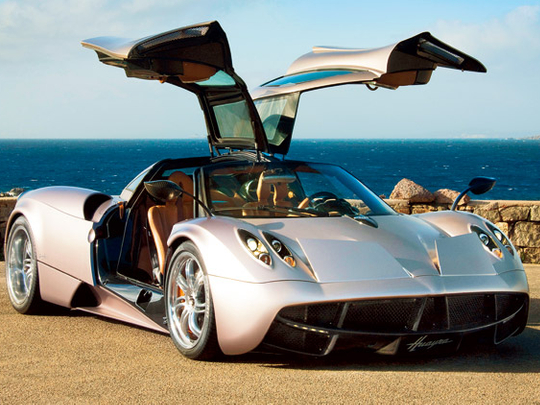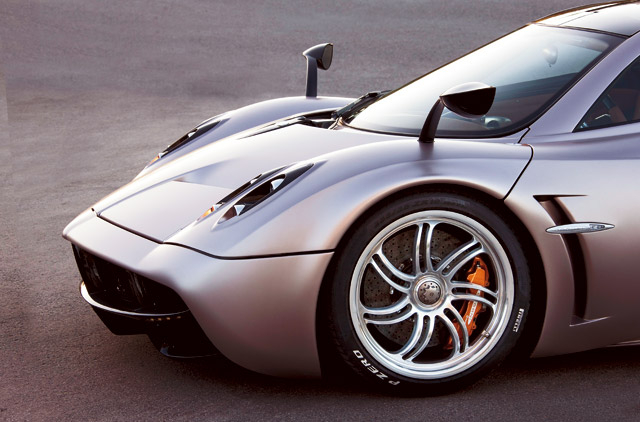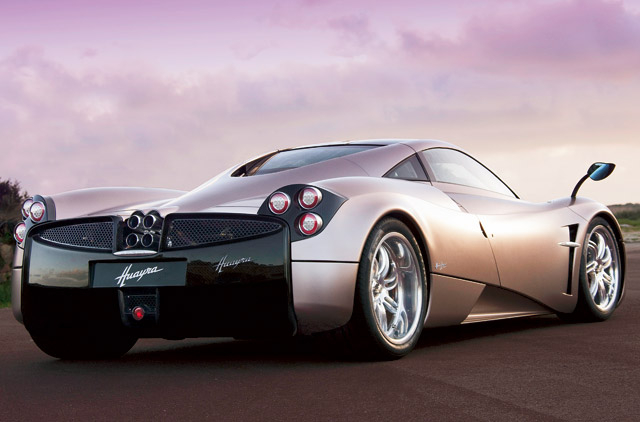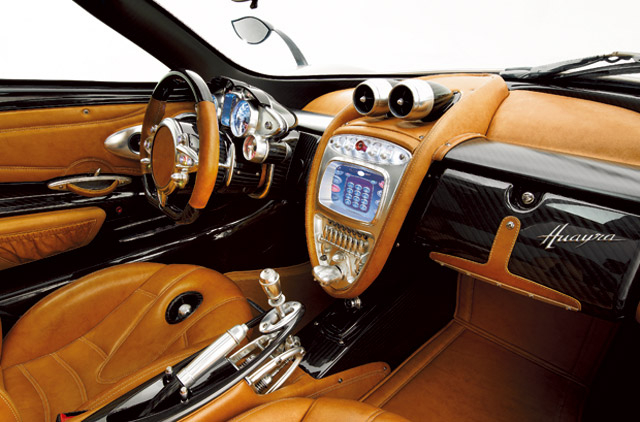
Long ago, in a land far, far away, lived Huayra Tata, the deity of wind of the Aymara people. He could command blizzards and tornadoes and called a frozen cave in the Andean mountains home, only coming out to flex his muscles to his wife Pachamama — the deity of mother earth. He'd yawn, stretch his arms, walk out the cave and then blow a Category 5 hurricane over the lands.
Reassured of his manliness, he'd then go back to sleep for another thousand years or so. His naps gave people false hope; the seas are calm, the trees merely whistling in gentle breezes. But what the world doesn't realise is that Huayra Tata has just awoken again, and this time he's about to unleash a typhoon of epic proportions. And it's wearing a Pagani badge…
The storm we're on about is the new Pagani Huayra, the Zonda's replacement, which has taken five years to reach automotive perfection. Now that it's finally here, we can gawk at the Huayra's gaping catfish grille, innovative front air flaps, subtly incorporated intakes and cab-forward profile.
A carbon-titanium central monocoque is completely new, achieving huge levels of rigidity thanks to gullwing doors. Pagani even managed to fit the fuel tank inside the safety shell, while the front and rear subframes incorporate energy absorbing crash structures. Pure race car stuff. Especially when you realise the Huayra weighs just 1,350kg making it 255kg lighter than a Ferrari 599 GTO and 210kg lighter than the Lamborghini Murciélago LP 670-4 SV.
With a Mercedes-AMG 60-degree, 6.0-litre V12 turbocharged to 700bhp, the new Pagani boasts a power-to-weight ratio of 519bhp-per-tonne. There's also 1,000Nm of torque, while the turbos are able to avail all this twist earlier than ever thanks to tweaking that enables immediate response and at any point in the rev band. Dry sump lubrication means the engine never gets starved of oil either, and a titanium exhaust system weighing 10kg less than before completes the heart of the Huayra.
Then, there's a new transmission capable of shifting tectonic plates via the rear wheels. It's a transverse sequential seven-speed gearbox which weighs just 96kg, doing away with the popular dual clutch arrangement because it would've added 70kg to the whole job.
Handling improvements come from a longer wheelbase for high speed stability, forged double A-arms and pushrod shocks. Pirelli also developed bespoke P Zeros for the car, somehow combining road holding with low rolling resistance while allowing for top speeds of over 370kph.
Aerodynamically, the Huayra is state of the art, with adjustable front ride height and control flaps on all four corners. These flaps raise or lower according to inputs from the ABS and ECU, calculating speed, yaw rate, lateral acceleration, steering angle and throttle position to make a decision.
The cabin is nothing short of marvellous too with luxurious leather, aluminium trim, and a dashboard inspired by Swiss watch designs.
Curiously, Pagani isn't revealing any performance figures, but we guess that rather depends on what mood the deity of storms is in once he's done yawning and rubbing his eyes.
A long road
Pagani might be just a tiny car manufacturer, but the Huayra has been undergoing a detailed and painstaking (just google ‘Pagani C9 crash') five-year development process. Five prototypes were initially built to conduct road tests from the Death Valley to the Arctic Circle, ensuring the model can handle all climate extremes.
Over half a million kilometres have been covered by the prototypes — each one focusing on a specific component or aspect — and pretty soon they'd have racked up a cool million.















